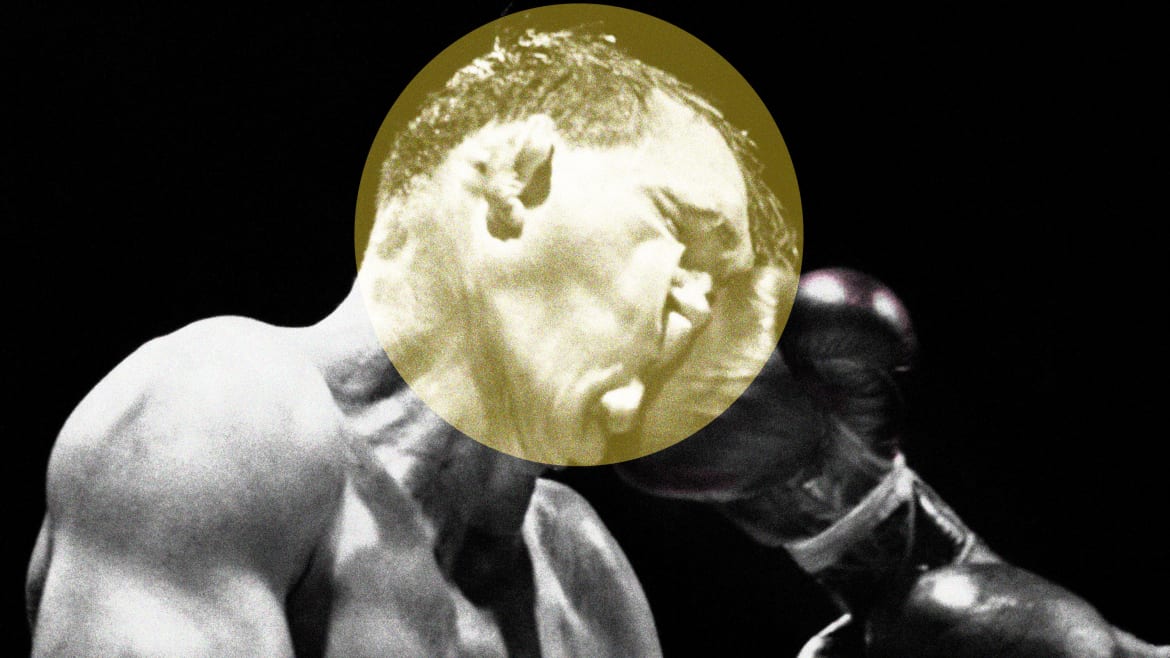 Photo Illustration by Erin O'Flynn/The Daily Beast/Getty Images
Photo Illustration by Erin O'Flynn/The Daily Beast/Getty ImagesInside a small office in the New Lab Innovation Complex at the Brooklyn Navy Yard this past February, the thunderous sounds of a wrestling match could be heard bouncing off the walls of an otherwise calm workspace. I walked in and saw two heavyweights–each in full-body motion capture gear, locked in a clinch on wrestling mats spread across the center of the office. To the side of the room, next to a dry erase board scrawled with a web of potential combat situations, were two video game designers from New York University developing a promotional video game that focuses on the types of freestyle and Greco-Roman wrestling seen in high schools and colleges across North America. The video game is actually supposed to promote a specific product: a futuristic looking softshell helmet that sat on a drafting table at the other end of the room. It’s less of the brightly colored foam headgear one imagines in a varsity wrestling match than it is the headgear of a Celtic warrior, thrust into the twenty-first century with modern design.
Contact sports have swelled into a billion-dollar market—but in spite of that growth (or perhaps because of it), they are also a focal point in a larger discussion over the risks of head injuries and concussions in young people. In 2018 alone, nearly 450,000 people were treated for sports-related head injuries at U.S. hospitals, according to the U.S. Consumer Product Safety Commission. From 2010 to 2016, about 283,000 children were brought to the emergency room each year due to sports and recreation–related traumatic brain injuries, according to the Centers for Disease Control and Prevention.
“So much of this trauma is preventable with the right equipment,” Mario Mercado, an entrepreneur and former New York University wrestling coach, told The Daily Beast. “We undeniably need to address the severe rate of concussions and other head traumas, but contact sports are a part of the American way of life. Kids need this.”

 2 years ago
649
2 years ago
649 
















 English (United States) ·
English (United States) ·